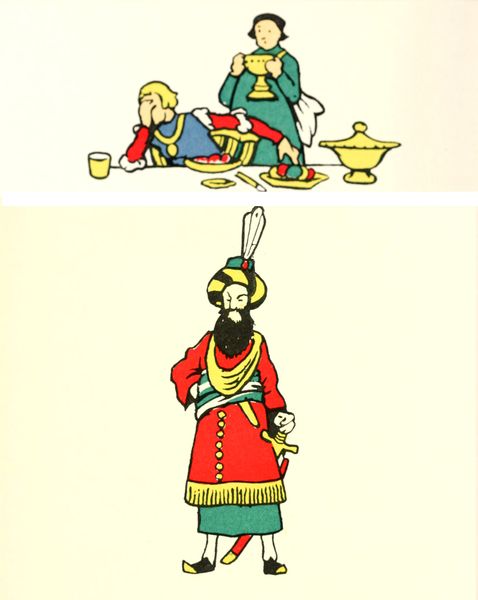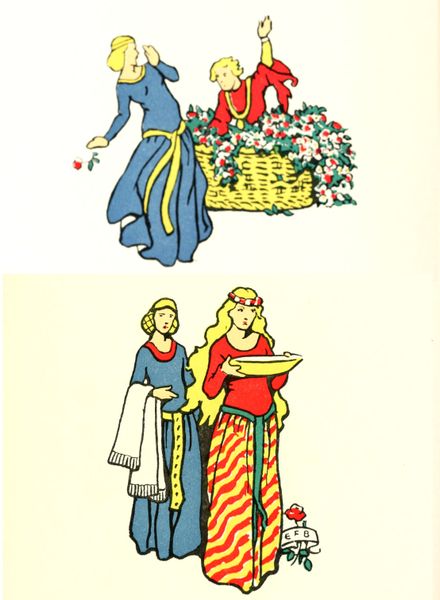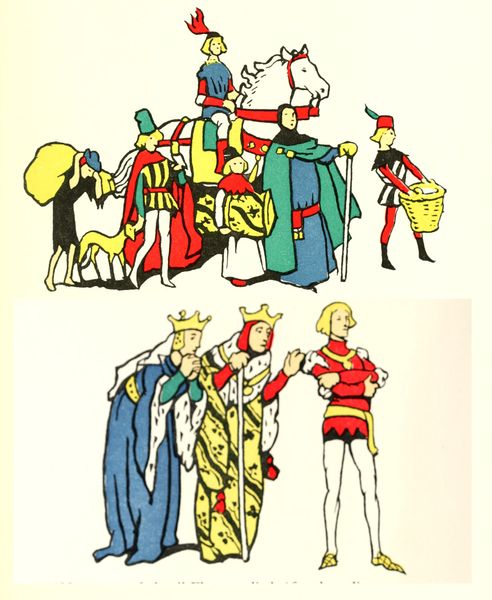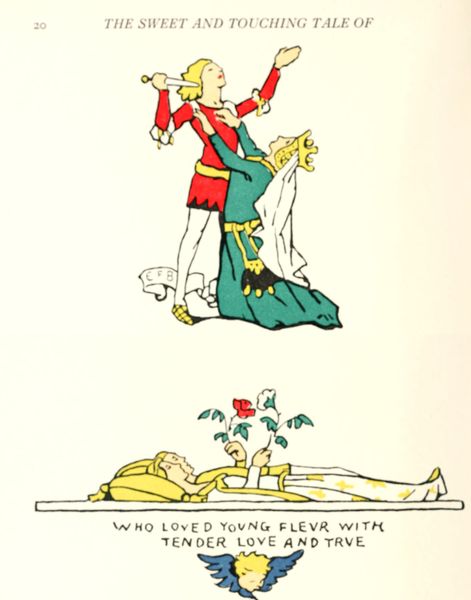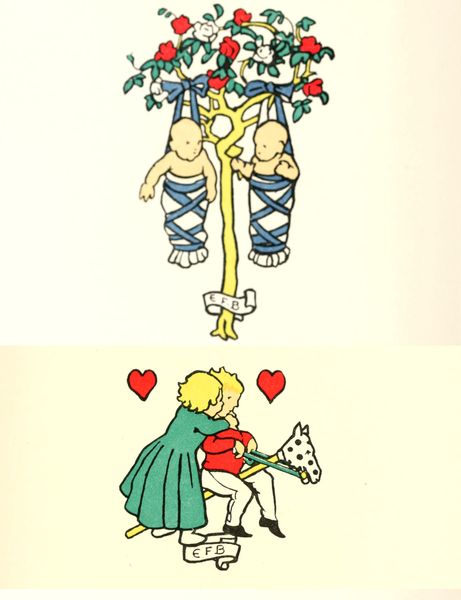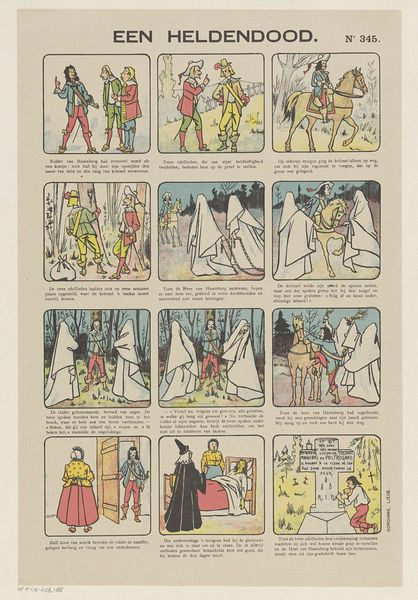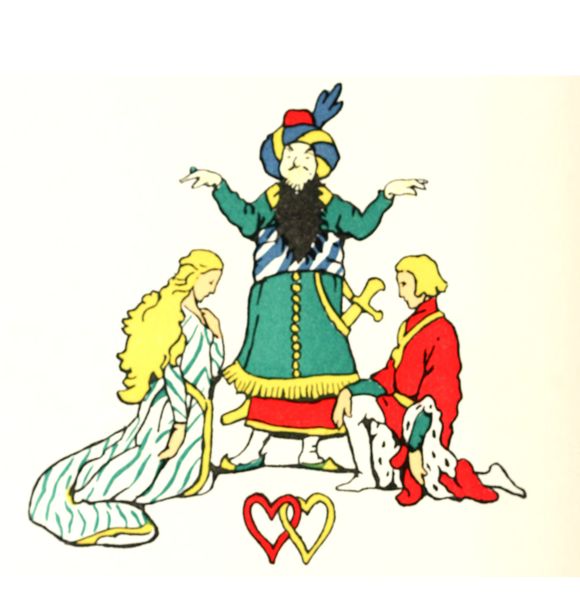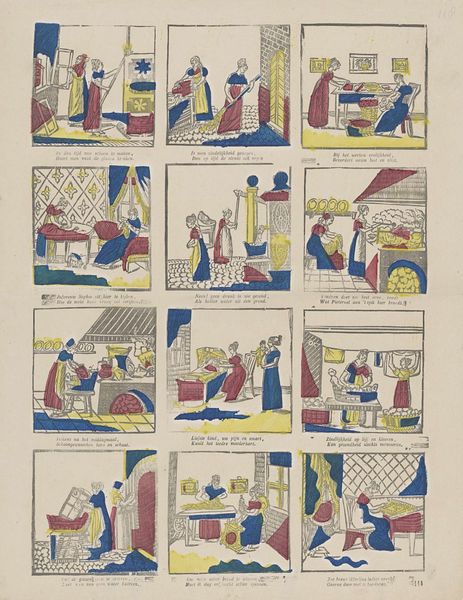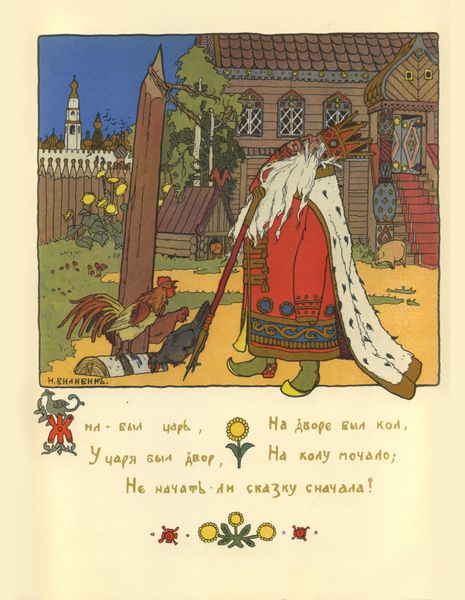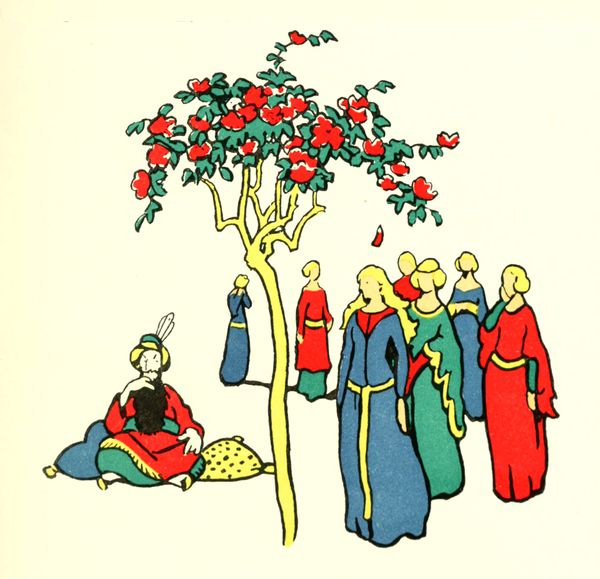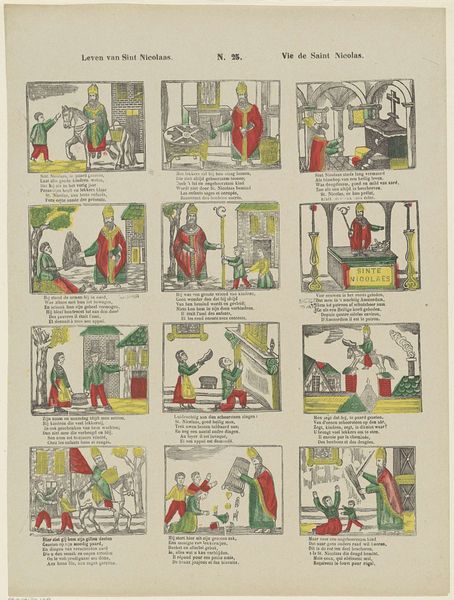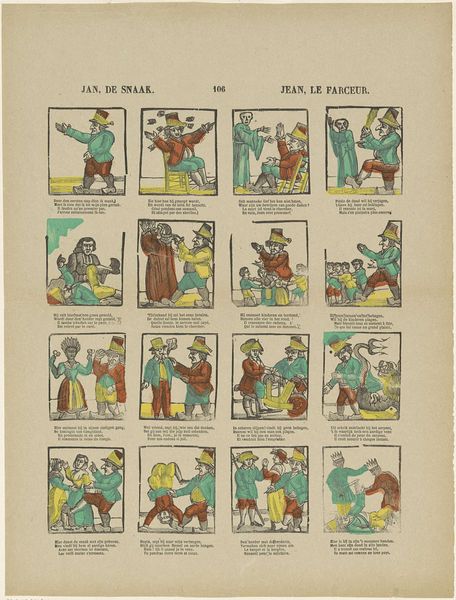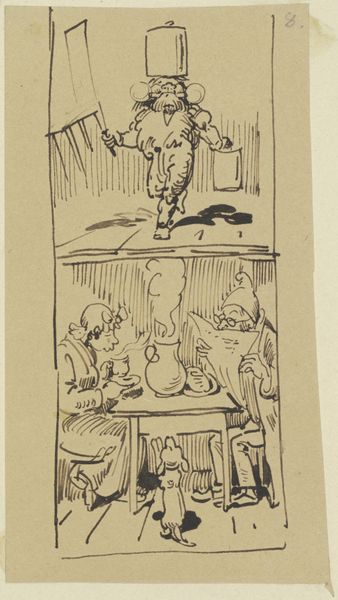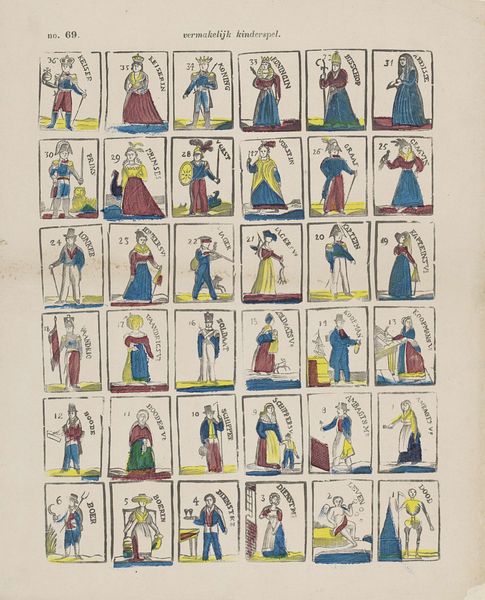
Copyright: Public domain
Curator: Welcome! Today, we’re looking at "The sweet and touching tale of Fleur and Blanchefleur," a drawing on paper created in 1922 by Eleanor Fortescue-Brickdale. Editor: My initial reaction is that it feels incredibly formal and decorative. The crisp lines and flat areas of color give it the feel of a printed illustration, perhaps for a children's book. Curator: The drawing presents us with distinct planes – one features a boy and girl holding books, while below we see two figures writing at desks. The color palette is simple, and yet balanced; we have reds, blues and greens anchoring the composition. The line work and design remind us that Fortescue-Brickdale was active during the Arts and Crafts movement, interested in design and book illustration. Editor: It's intriguing how the work hints at narrative without giving much away about the specifics. I am also immediately drawn to what appear as gender dynamics between the two characters at the top, considering Brickdale's own challenges navigating a male-dominated art world. Curator: Certainly! These gendered relationships were something she engaged with and around in order to access the largely inaccessible formal avenues of success that existed for male artists at that time. In terms of the composition itself, there's a studied juxtaposition of figures, emphasizing geometric forms. It alludes to, and simultaneously disrupts traditional portraiture conventions. It presents an image that reflects the subjectivities in love and literature that often played a central role within these historical spaces. Editor: Absolutely, placing it within the historical context, it reflects society's aspirations of what female and male artists could and should represent. These dynamics are a constant in art historical painting as it exists as a formal exercise and opportunity for subversion. Curator: Agreed. We can explore its place in the larger body of graphic work created in the early 20th century. Fortescue-Brickdale demonstrates command over line and form. Editor: By positioning her within the lineage of illustration and graphic design, we create an additional framework for understanding both historical constraints and the possibility of cultural messaging available within such spaces.
Comments
No comments
Be the first to comment and join the conversation on the ultimate creative platform.
